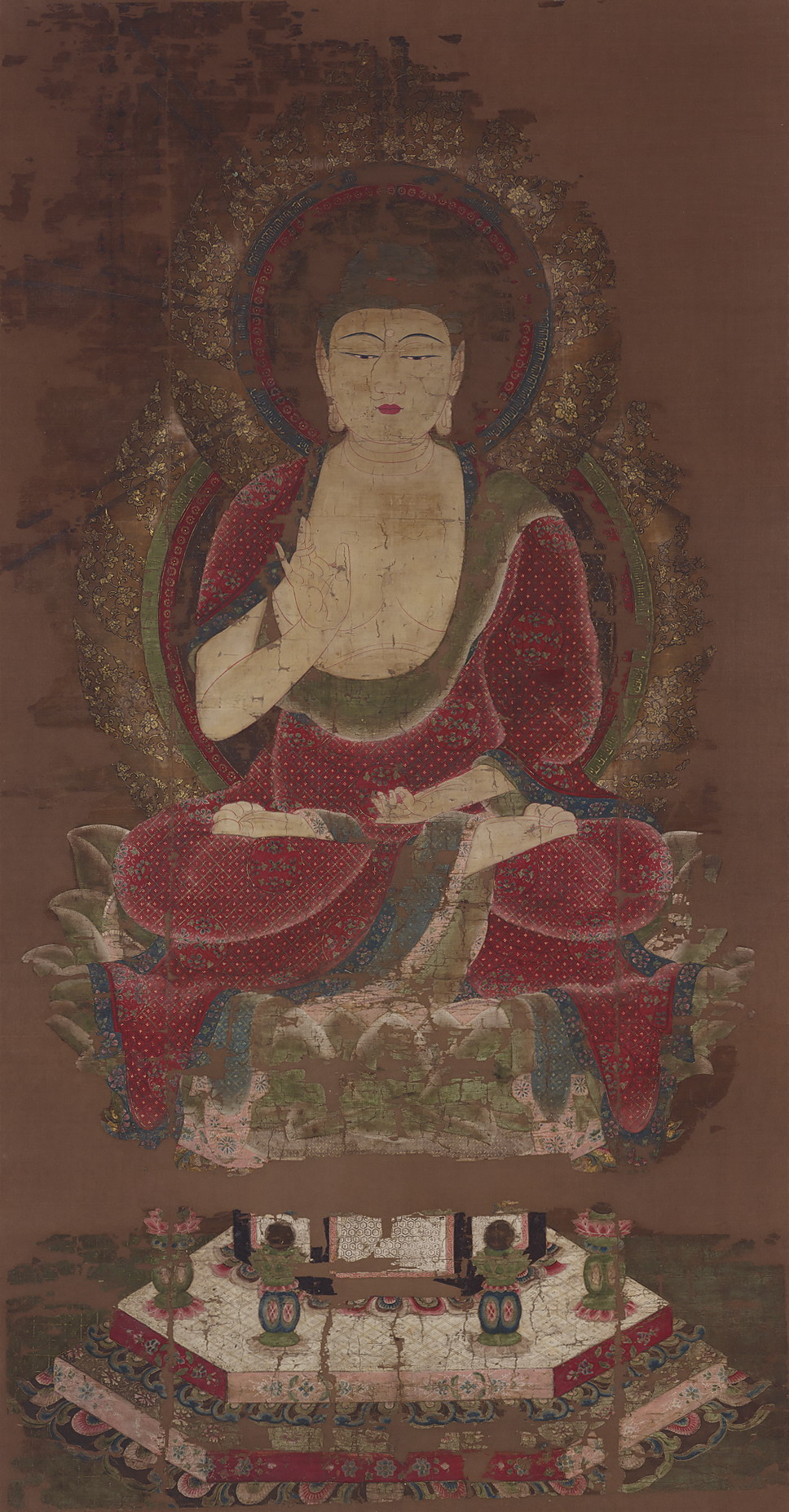- TOP
- The KNM Collection
- Masterpieces of the KNM
- Buddhist Painting
- Shaka Nyorai (Sakya Tathagata)
*Click or tap image to enlarge.
Buddhist Painting
Shaka Nyorai (Sakya Tathagata)
- Japan, Late-Heian Period,12th century
- Hanging scroll; color on silk
- H. 159.4 cm, W. 85.5 cm
- Jingo-ji Temple, Kyoto
With the growing popularity of Esoteric Buddhism (which worshiped Dainichi Nyorai) and Jodo Buddhism (which worshiped Amida Nyorai) in the Heian Period, one might expect the number of images of Shakamuni (Sakyamuni Buddha) to have decreased. However, in actuality, the number of paintings and sculptures of the Historical Buddha equalled that of previous periods, demonstrating that, aided by the popularity of the Lotus Sutra (Hokkekyo), faith in Shakamuni remained strong throughout the period.
This scroll is the only extant Heian Period Buddhist painting that depicts Shaka alone. This painting has been called Aka Shaka (Red Sakyamuni) because of the color of the robes. Shakamuni sits cross-legged on the seven-fold lotus seat. His body is yellowish-white and outlined in flowing, red strokes. Shaka's robes are decorated with a shippo-tsunagi pattern in kirikane (cut gold leaf). Highlighted sections are colored white. The serene and elegant facial expression and the mild colors give this painting a sense of graceful serenity. It can be regarded as the finest depiction of a nyorai (Tathagata) of the Heian Period Buddhist paintings.







